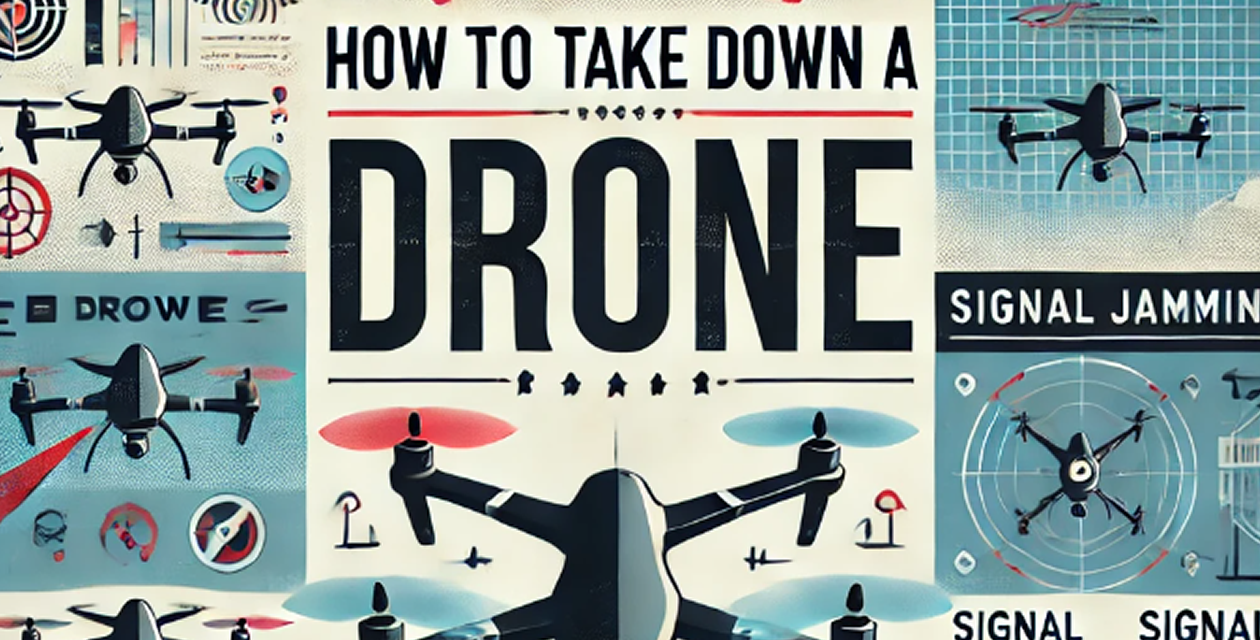Drones are everywhere these days, zipping across skies like mechanical hornets. Whether they’re buzzing over your backyard barbecue or hovering suspiciously near sensitive locations, drones can stir up serious concerns. From privacy invasions to safety threats, the question is: how do you take down a drone? Let’s break it down—legally and otherwise—while keeping that off-the-grid, self-reliant mindset front and center.
The Legal Landscape of Drone Defense
Before you consider disabling a drone, let’s talk legality. In most places, drones are protected by strict regulations. Shooting one down or interfering with its signal can land you in hot water. But there are exceptions, especially when a drone poses a genuine threat to privacy, safety, or security.
If a drone is being used to commit a crime, law enforcement can legally take it down. For the everyday prepper, the rules are murkier. However, certain states may allow you to act in self-defense if the drone is endangering you or your property. Know your local laws before taking matters into your own hands.
Techniques for Taking Down a Drone
If you’re serious about drone defense, it’s time to get tactical. Here are the most effective methods, ranging from high-tech wizardry to old-school ingenuity:
1. Jamming: Cutting the Signal
Signal jamming is one of the most efficient ways to disable a drone. Using specialized equipment, you can disrupt the control frequencies, causing the drone to lose communication with its operator and land safely. However, signal jammers are highly regulated and often illegal for civilian use. If you choose this route, proceed with caution and be aware of the risks.
2. Net Guns: Capturing with Precision
For those who prefer non-lethal methods, net guns are a solid option. These devices fire a net that entangles the drone’s propellers, bringing it down without damage. Net guns can be handheld or drone-mounted for air-to-air takedowns. They’re relatively safe but require practice to master.
3. Spoofing: Tricking the Tech
Spoofing involves hijacking the drone’s GPS system, causing it to misinterpret its location. With the right setup, you can guide the drone to a safe landing or send it spiraling off course. This method demands specialized knowledge and equipment but offers a satisfying sense of digital domination.
4. Shooting: The Last Resort
Shooting down a drone may seem like the simplest solution, but it’s often the most problematic. Bullets can cause collateral damage, and firing in populated areas is both dangerous and illegal. That said, in rural or remote settings, using specialized shotgun shells like the Skynet round can be surprisingly effective. Just be prepared to face potential legal repercussions.
The Off-the-Grid Advantage
Drone Sightings Map
As preppers, we thrive on self-reliance and resourcefulness. Taking down a drone isn’t just about defending your space—it’s about sending a message: your freedom isn’t negotiable. Whether you’re jamming signals, casting nets, or simply documenting suspicious activity for law enforcement, staying vigilant is key.
For those of us off the grid, drones represent both a threat and an opportunity. The same technology that spies on us can be hacked, hijacked, and even repurposed. A well-prepared prepper sees a rogue drone not just as a nuisance but as a challenge—a chance to turn their tools against them.
When Action is Necessary
Not every buzzing drone warrants action. Assess the situation carefully. Is the drone behaving erratically? Is it over restricted airspace or hovering suspiciously near your property? If it’s clearly up to no good, you might have justification to act. But remember: safety and legality come first.
For those committed to preparedness, investing in counter-drone equipment can be a game-changer. Tools like net guns and GPS spoofers offer effective, non-lethal options for neutralizing drones while keeping you out of legal trouble.
Final Thoughts: Stay Ready
In today’s drone-filled world, the ability to disable a drone is a valuable skill. Whether you’re protecting your privacy, your family, or your off-grid homestead, understanding your options is essential. Equip yourself with the right tools, know the laws, and always keep your tactical edge.
Because in the battle for freedom and self-reliance, the skies are just another frontier.





